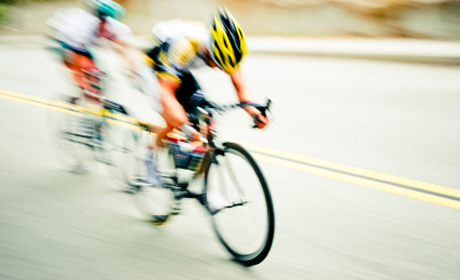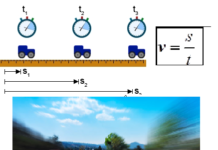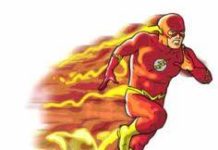 Mechanics is a part of physics that deals with the study of the mechanical movement of the body and its interaction with other body. In order to study mechanical motion, it is necessary to determine the position of the body in the space. We can speak of the position of the body in space only if we have in mind the other body in relation to which the position is determined. Applying the laws of mechanics we can determine the position of the celestial bodies at any moment or we can predict the eclipse of the Sun and the Moon. We can also determine the movement on the Earth, such as the movement of a car in relation to the environment or movement of the airplanes in relation to the Earth. By mechanical movement we consider every change of the position of one body in relation to another body. mechanics consist of kinematics, dynamics and statics.
Mechanics is a part of physics that deals with the study of the mechanical movement of the body and its interaction with other body. In order to study mechanical motion, it is necessary to determine the position of the body in the space. We can speak of the position of the body in space only if we have in mind the other body in relation to which the position is determined. Applying the laws of mechanics we can determine the position of the celestial bodies at any moment or we can predict the eclipse of the Sun and the Moon. We can also determine the movement on the Earth, such as the movement of a car in relation to the environment or movement of the airplanes in relation to the Earth. By mechanical movement we consider every change of the position of one body in relation to another body. mechanics consist of kinematics, dynamics and statics.
BASICS OF KINEMATICS
Kinematics studies the movement of the body, not the cause of movement. Dynamics is the dependence between the movement and the force that causes it. The statics examines the bodies that are at rest. Depending on the body’s properties, we have the mechanics of solid bodies, mechanics of liquids, and mechanics of gases.
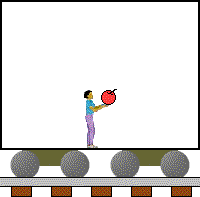 Reference body
Reference body
Whether a body moves or rests can we know on the basis of whether this body changes its position in relation to another body. If the position of a vehicle changes in relation to the environment, we say that this vehicle is moving. So when the position of a body is determined only in relation to another body we calle that the reference body, which can be any body. For example, any object or the enviroment can be a reference body. The Sun, Moon, Earth can be taken as the reference body for cosmic observations. In order to observe a movement we must know in relation to which the body of the body is moving. Water in the river moves in relation to the coast, the train in relation to the track, the planets in relation to the Sun, all movements are relative as well as rest.
Example: Let’s look at the situation of boys in the vehicle from the picture, moving in relation to the environment. The boy is standing still in relation to the vehicle. However, the vehicle is moving, so in relation to the environment and the boy also moves along with the vehicle. In relation to the vehicle, the boy is at rest, the ball moves in relation to the boy, and along with him it moves in relation to the environment. In nature, no body is in a state absolute rest. Movement is the basic form of the existence of matter.
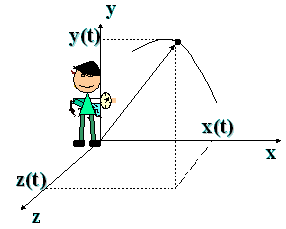 Material point
Material point
Often, when studying mechanical movement, the term “material point” is used. If we observe the movement of the bus in relation to the road it moves, we can choose one point on the bus and observe its movement. We can even imagine that the entire mass of the bus is one point. In the case where the dimensions of the body are much smaller than the dimensions of the distance that this body travels, the bodies can be replaced by a material point. When a ship is sailing in the open sea, we see it as a point, we also see the stars in the sky as points because they are very far from us. In case of movement of the celestial bodies we can use the Earth as the material point when its moving in relation to the Sun. Material point is also a macroscopic body whose dimensions are extremely small in relation to the space in which it moves, and its mass is concentrated at one point. The body whose dimensions can be ignored in certain conditions is called the material point.
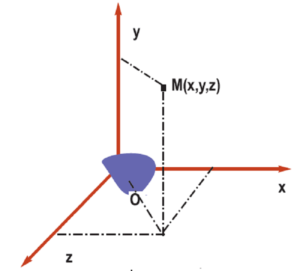 Reference system
Reference system
In order to determine the position of the material point M, imagine a coordinate system that is linked to the body to which is being compared. Let us connects the coordinate system for the reference body O (Figure 1.2). Now the position of the material point relative to the reference body O is determined by its coordinates, x, y and z. Any change in the position of the body can be described as a movement in relation to the three axes of the system. Reference body, together with a coordinate system, is called the reference system. We said that the movement of the body is a change in the position of the body in relation to another body. Each point during the motion describes a line called a trajectory or a point path.
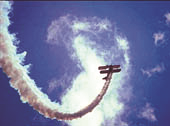 Example: When we use a chalk on a blackboard, a trail remains. When airplane flyes there is a white trail behind it. If all the points at which the body moves connect with the one line, we would get a path or a trajectory.
Example: When we use a chalk on a blackboard, a trail remains. When airplane flyes there is a white trail behind it. If all the points at which the body moves connect with the one line, we would get a path or a trajectory.
According to the shape of the path of movement, the movements are divided into straight and curvilinear.
Example: A boat on the picture, a car and a helicopterare moving from point A to point B. The boat and car are moving along the curvilinear path, and the helicopter moves straight.
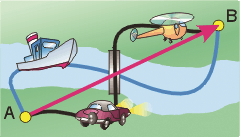 Movement is straightforward if its path is a straight line.
Movement is straightforward if its path is a straight line.
Movement is curvilinear if its path is a curved line.
![]()
![]()
By the way of the moving points of the body we can distinguish between translatory and rotational motion.
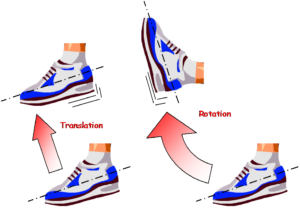 Movement is translatory if each point of the body moves parallel to itself. Movement is rotational if every point of the body moving around a surfacet describes a circle whose center lies on that surface and the circle is in the plane perpendicular to that surface.
Movement is translatory if each point of the body moves parallel to itself. Movement is rotational if every point of the body moving around a surfacet describes a circle whose center lies on that surface and the circle is in the plane perpendicular to that surface.
